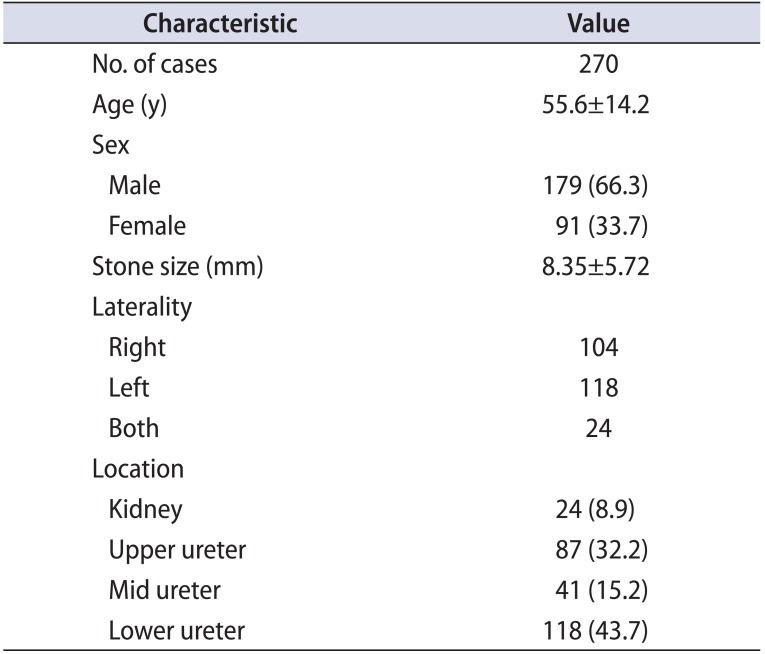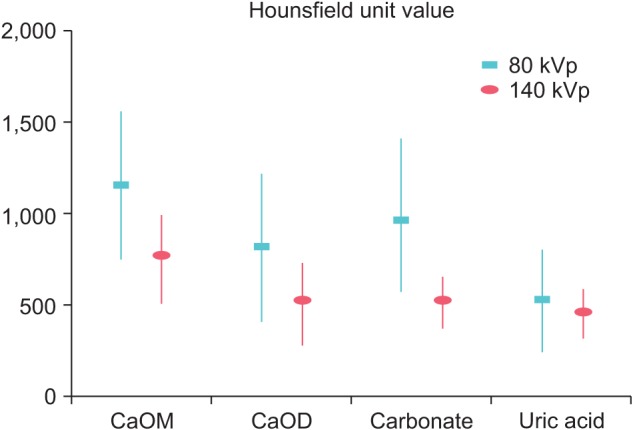Can a dual-energy computed tomography predict unsuitable stone components for extracorporeal shock wave lithotripsy?
引用次数: 14
Abstract
Purpose To assess the potential of dual-energy computed tomography (DECT) to identify urinary stone components, particularly uric acid and calcium oxalate monohydrate, which are unsuitable for extracorporeal shock wave lithotripsy (ESWL). Materials and Methods This clinical study included 246 patients who underwent removal of urinary stones and an analysis of stone components between November 2009 and August 2013. All patients received preoperative DECT using two energy values (80 kVp and 140 kVp). Hounsfield units (HU) were measured and matched to the stone component. Results Significant differences in HU values were observed between uric acid and nonuric acid stones at the 80 and 140 kVp energy values (p<0.001). All uric acid stones were red on color-coded DECT images, whereas 96.3% of the nonuric acid stones were blue. Patients with calcium oxalate stones were divided into two groups according to the amount of monohydrate (calcium oxalate monohydrate group: monohydrate≥90%, calcium oxalate dihydrate group: monohydrate<90%). Significant differences in HU values were detected between the two groups at both energy values (p<0.001). Conclusions DECT improved the characterization of urinary stone components and was a useful method for identifying uric acid and calcium oxalate monohydrate stones, which are unsuitable for ESWL.



双能计算机断层扫描能否预测体外冲击波碎石中不合适的结石成分?
目的:评估双能计算机断层扫描(DECT)识别尿结石成分的潜力,特别是尿酸和一水草酸钙,这些成分不适合体外冲击波碎石(ESWL)。材料与方法:本临床研究纳入了2009年11月至2013年8月期间行尿路结石取出术并分析结石成分的246例患者。所有患者术前均使用两种能量值(80 kVp和140 kVp)进行DECT。测量了Hounsfield单位(HU),并将其与石成分相匹配。结果:在80 kVp和140 kVp能量值下,尿酸结石和非尿酸结石的HU值有显著差异(p)结论:DECT改善了尿石成分的表征,是鉴别不适合ESWL的尿酸和草酸钙一水结石的有效方法。
本文章由计算机程序翻译,如有差异,请以英文原文为准。
求助全文
约1分钟内获得全文
求助全文

 求助内容:
求助内容: 应助结果提醒方式:
应助结果提醒方式:


